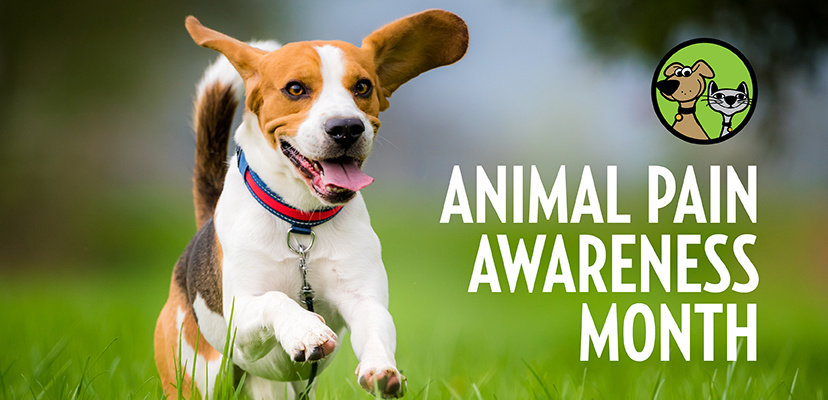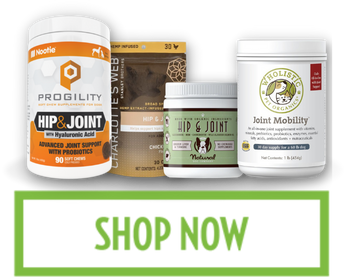National Pain Awareness Month Tips For Your Cat Or Dog
- Posted on
- By Dr. Christina Cole & Dr. Grant Tully
- Posted in cats, Dog & Cat Nutrition Tips, Dog & Cat Supplements, Dog & Cat Wellness, dogs
- 0

We love our pets and want them to lead happy, worry-free lives. It's hard to understand when our pets are in pain. Here are a few tips for National Pain Awareness Month. Learning more about the underlying causes of pain can help improve your ability to alleviate suffering for you and your pets.
We love our pets and want them to lead happy, worry-free lives. It's hard to understand when our pets are in pain. Here are a few tips for National Pain Awareness Month. Learning more about the underlying causes of pain can help improve your ability to alleviate suffering for you and your pets.
How To Tell If Your Pet Is In Pain
As animal chiropractors, we frequently see pets in pain. Often, an owner makes a chiropractic appointment for their dogs and cats because they aren't using stairs, aren't jumping on or off furniture, and are lethargic. When we examine their spine, the muscles often spasm, and the pup or kitty may be sensitive. The owner is often shocked to see some of the indicators of discomfort that a chiropractic exam reveals. However, animals rarely show signs of pain, so it can be difficult for anyone to figure out when they are hurting. This blog post will discuss why dogs and cats don't show pain, some signs, and what we can do.
Why Animals Don't Show Pain
Dogs and cats have evolved over thousands of years to hide signs of pain. Before humans added them to our families and provided regular meals, dogs and cats needed to hunt. As predators, they weren't at the top of the food chain. Therefore, it was advantageous to hide signs of pain so that larger predators wouldn't target them. This instinct is instilled in them and the primary reason our pets are so stoic. While the signs of discomfort aren't obvious, there are a few symptoms pet owners can look for.
Eight Signs That My Dog Or Cat Is In Pain
All animals are different, just like people. Some are more open to showing signs of pain relative to others (although the majority still hide it). In addition, some might be open to showing discomfort at home, and when you bring them to the veterinarian, they hide it. However, there are a few things you can look for that are often indicators. These are:
- Excessive grooming: Dogs and cats frequently groom themselves. However, seeing your pet focusing on one localized area could be a sign of discomfort.
- More vocal: If your dog or cat is more vocal than usual, it could be an indicator.
- Loss of appetite: This is one we frequently see in our practice. Pets in a pretty good amount of pain might refuse to eat.
- Increased aggressiveness: If you have a friendly dog or cat suddenly nipping and showing signs of aggression, it could be a sign of pain. This can even be focused on owners in addition to strangers and other dogs.
- Panting: This is pretty common for many cases we work with.
- Issues with movement: If your active dog or cat suddenly won't do stairs or jump on/off furniture anymore,e there may be an issue.
- Hiding: Many dogs and cats will hide when they aren't feeling well.
- Shaking: Indicates acute back and neck pain.
Your furry family member is a master of hiding pain. They often won't show signs until the pain is pretty advanced. However, if you see some of these signs, there's a good chance something is bothering your pet.
Help Pets Reduce Pain
Many of our patients visit their primary veterinarian before coming to see us. Your vet will try to identify the cause of the pain and suggest a prescription to help relieve discomfort. If it is joint-related, they may suggest visiting a board-certified animal chiropractor. The IVCA and AVCA are the two major board certifications in the United States. We recommend finding a board-certified animal chiropractor if you are interested in caring for your pet, as they have been trained appropriately.
Four Natural Ways To Help Relieve Dog And Cat Pain
There are several ways to help with discomfort for your dog, even without a prescription. This includes:
- CBD oil – we have numerous clients that use CBD oil and claim that it is effective. It is often retailed in holistic pet shops.

- Golden paste – if you have an older dog and joint issues are a problem, you can utilize the golden paste to see if it helps. It combines turmeric, coconut oil, and a little black pepper, and this is an excellent all-natural anti-inflammatory. Make your own by following this recipe, or you can purchase made options from your pet store if they retail it. Fish oil can also be a great compliment.

- Joint supplements – can help with common issues as well. Glucosamine on its own is excellent. However, we recommend Connectin Hip and Joint, which contains anti-inflammatory herbs and cartilage-protecting nutrients.
- Essential oils – while we aren't the foremost experts on essential oils, many of our clients use them and claim they are effective.
We recommend visiting your veterinarian first to determine the cause of the pain. During your visit, you can ask about natural remedies such as these.
It would be great if we could talk with our pets for several reasons. However, a huge benefit would be to know when they are in pain and could use some help. Unfortunately, they are excellent at hiding pain due to their evolution. As we mentioned previously, there are subtle signs that can indicate discomfort. If there is discomfort, a visit to your vet will help in addition to numerous other natural remedies. Our dogs and cats are an integral part of our family. If you see any of these signs, it could indicate pain, and your pet will appreciate you for noticing and helping them!
Stop by our retail location in Madison Heights, Michigan, just north of Detroit, which is open Monday through Saturday, 10:00 am - 8:00 pm, and Sundays from 10:00 am - 6:00 pm, or visit our 24/7 natural pet food, treats, toys, and supplies store online, or message us on Facebook for any inquiries! We'd love to help you with nutrition suggestions and support for your cats and dogs!






Comments
Be the first to comment...